Potential and Kinetic Energy Worksheets
Worksheets are a helpful learning tool that can enhance understanding and retention of concepts, and when it comes to the topics of potential and kinetic energy, they can be particularly beneficial. By providing a structured format for practice and application, these worksheets offer students the opportunity to explore and apply their knowledge of these energy forms. Whether you are an educator searching for resources to supplement your lesson plans or a student seeking additional practice, these potential and kinetic energy worksheets can support your learning journey.
Table of Images 👆
- Potential Kinetic Energy Worksheet
- Potential and Kinetic Energy Worksheet with Answers
- Potential Energy Worksheets
- Kinetic Energy Worksheet
- Potential and Kinetic Energy Worksheet Answers
- Potential Kinetic Energy Worksheet Answers
- Potential Kinetic Energy Worksheet Answer Key
- Kinetic vs Potential Energy Activity
More Energy Worksheets
Light and Heat Energy WorksheetsTypes of Energy Transfer Worksheet
Energy Light Heat Sound Worksheets
3 Forms of Energy Worksheets
Energy Worksheets for Third Grade
What is potential energy?
Potential energy is the energy that an object possesses due to its position or configuration. It is energy that is stored and can be converted into other forms of energy, such as kinetic energy, when the object is moved or released. Potential energy can exist in various forms, including gravitational potential energy, elastic potential energy, and chemical potential energy.
Give an example of an object with gravitational potential energy.
A raised object such as a book on a shelf has gravitational potential energy.
How is elastic potential energy related to stretching or compressing an object?
Elastic potential energy is the energy stored in an object when it is stretched or compressed. When an object is stretched or compressed, work is done on it to change its shape, and this work is stored in the object as elastic potential energy. The amount of potential energy stored depends on the amount of stretching or compressing that occurs, as well as the spring constant of the object. Therefore, the more an object is stretched or compressed, the more elastic potential energy it will have.
What is the formula to calculate gravitational potential energy?
The formula to calculate gravitational potential energy is given by U = mgh, where U is the gravitational potential energy, m is the mass of the object, g is the acceleration due to gravity, and h is the height of the object above a reference point.
Describe how the height of an object affects its potential energy.
The height of an object affects its potential energy because potential energy is directly proportional to height. The higher the object is lifted from the ground, the greater its potential energy. This is because the higher position increases the distance the object can potentially fall, which in turn increases the potential energy stored in the object due to gravity. Therefore, the higher the object is raised, the more potential energy it possesses.
What is kinetic energy?
Kinetic energy is the energy an object possesses due to its motion. It is determined by the object's mass and velocity, with kinetic energy increasing as either or both of these factors increase. Kinetic energy is a form of mechanical energy that can be transferred from one object to another or transformed into other forms of energy.
Explain how an object's mass and velocity affect its kinetic energy.
An object's kinetic energy is directly proportional to both its mass and the square of its velocity. This means that as the mass of an object increases, its kinetic energy will also increase, and as the velocity of an object increases, its kinetic energy will increase even more significantly due to the squared relationship. In essence, kinetic energy increases with both mass and velocity, with velocity having a larger impact on the overall kinetic energy of an object.
What is the formula to calculate kinetic energy?
The formula to calculate kinetic energy is KE = 0.5 * m * v^2, where KE is the kinetic energy, m is the mass of the object, and v is the velocity of the object.
Compare and contrast potential energy and kinetic energy.
Potential energy is the energy an object possesses due to its position or state, such as gravitational potential energy or elastic potential energy, while kinetic energy is the energy an object possesses due to its motion. Both forms of energy are measured in joules and are interconvertible - potential energy can be transformed into kinetic energy, and vice versa. However, potential energy is stored energy that has the potential to do work, while kinetic energy is active energy being utilized while an object is in motion.
Provide an example where potential energy is converted into kinetic energy.
When a roller coaster car is at the top of a hill, it has a high amount of potential energy due to its height above the ground. As the roller coaster car travels down the hill, the potential energy is gradually converted into kinetic energy, resulting in an increase in speed due to the car's motion. This conversion of potential energy into kinetic energy is what allows the roller coaster car to move along the track and experience thrilling and exciting rides.
Have something to share?
Who is Worksheeto?
At Worksheeto, we are committed to delivering an extensive and varied portfolio of superior quality worksheets, designed to address the educational demands of students, educators, and parents.




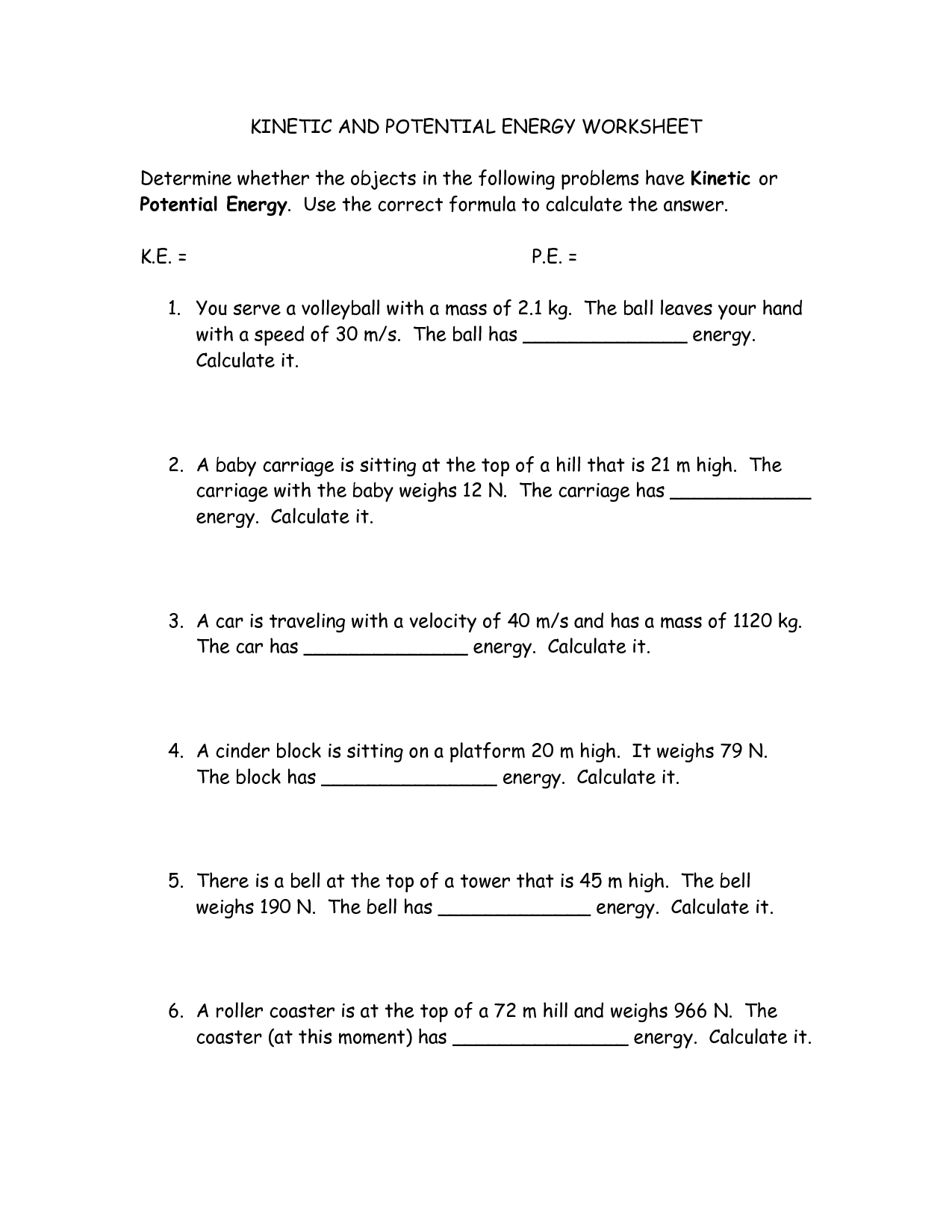
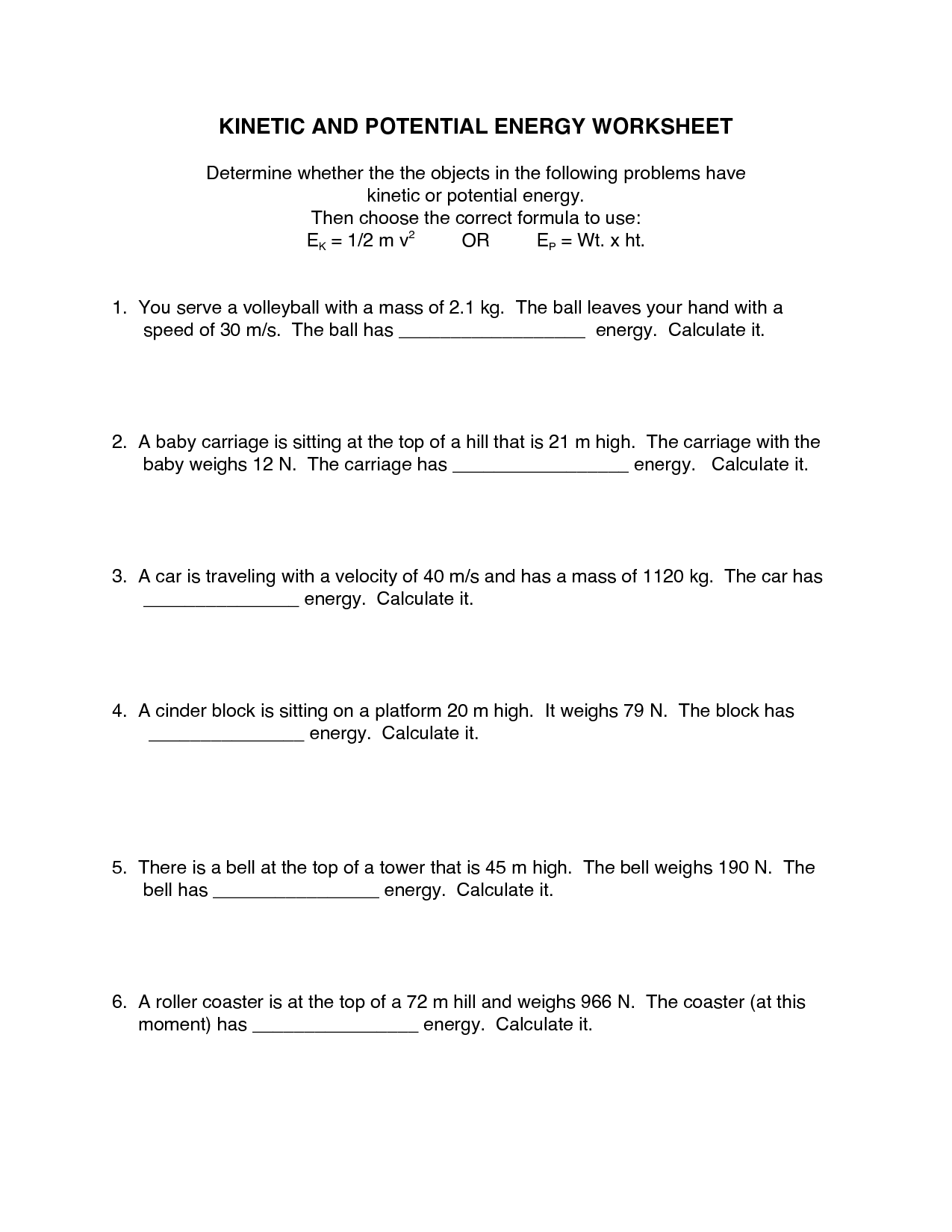
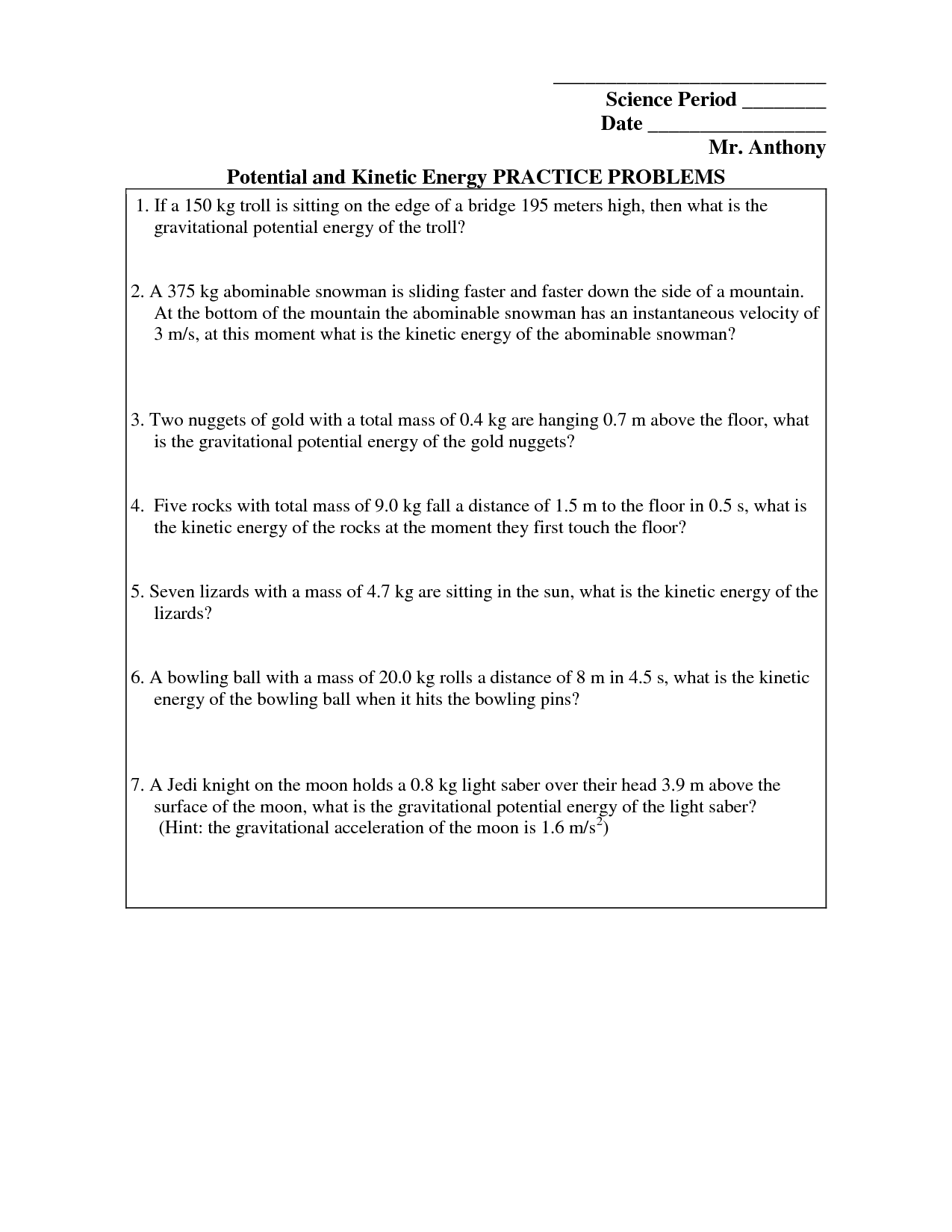
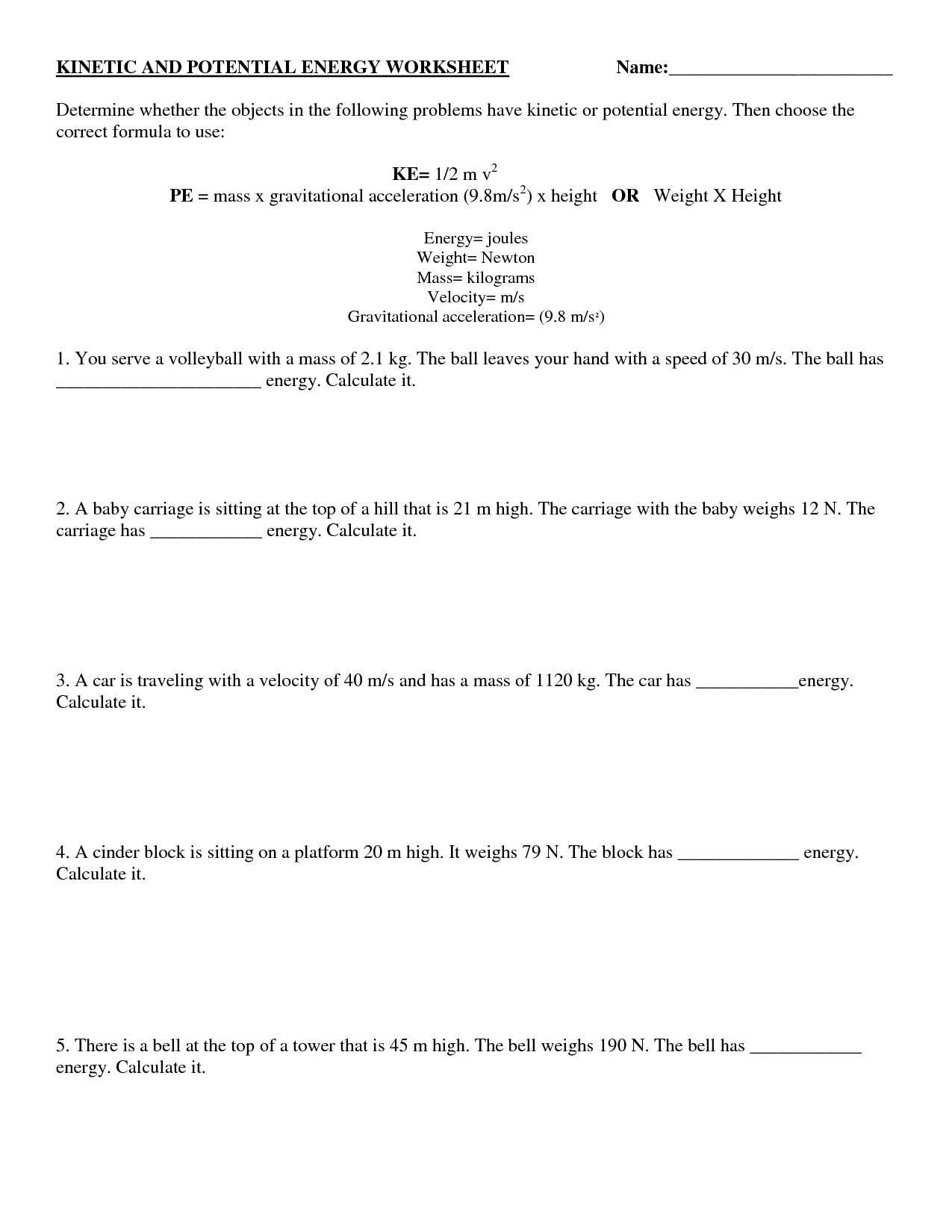
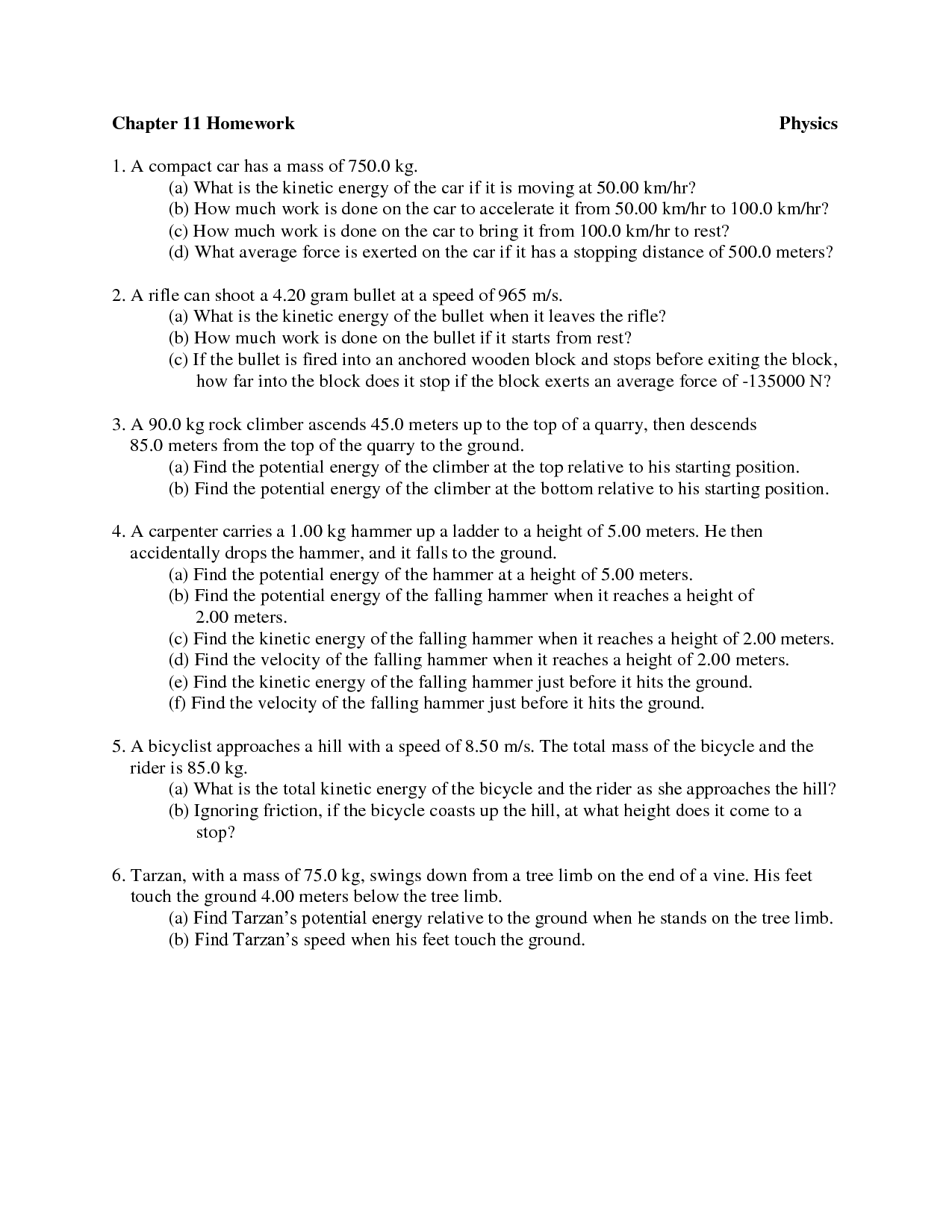
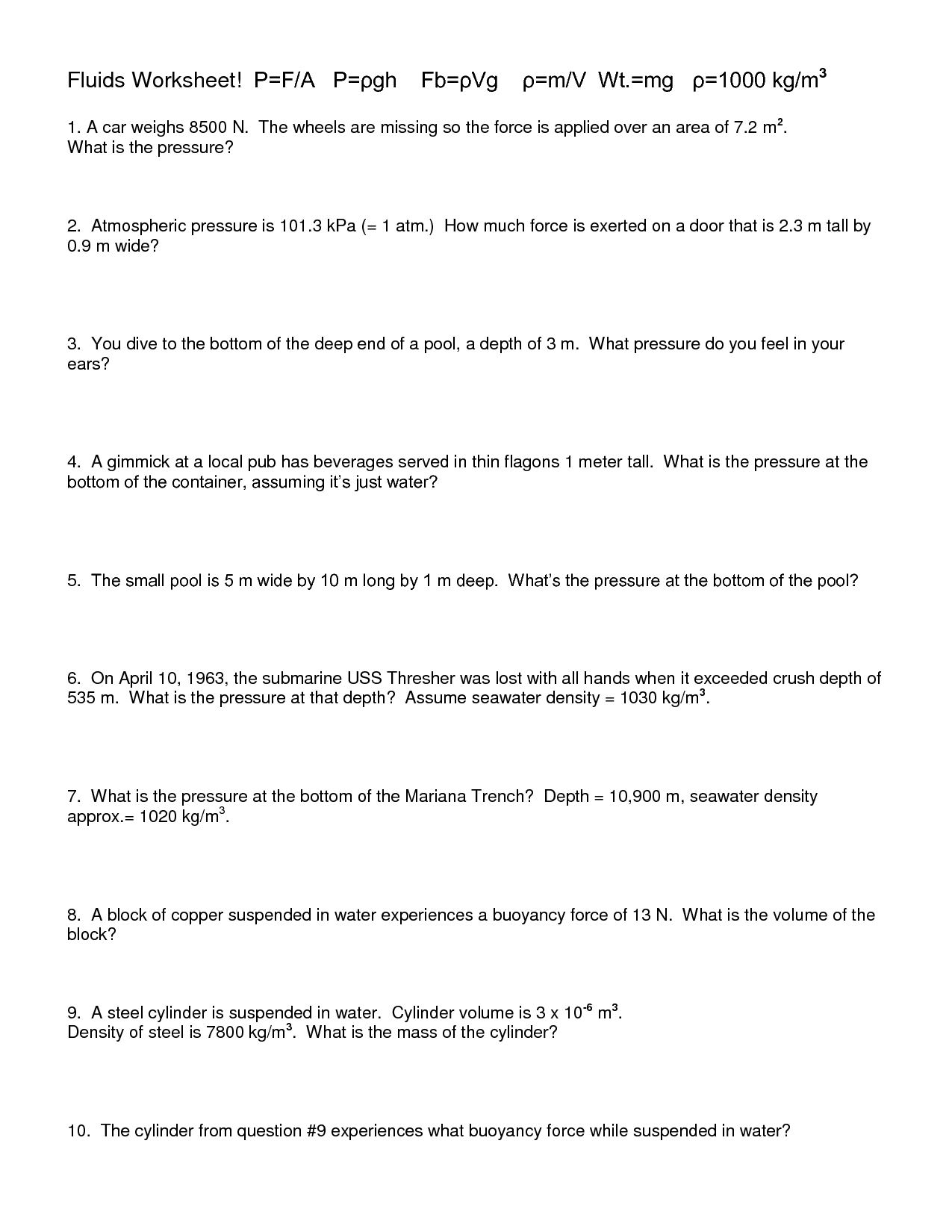
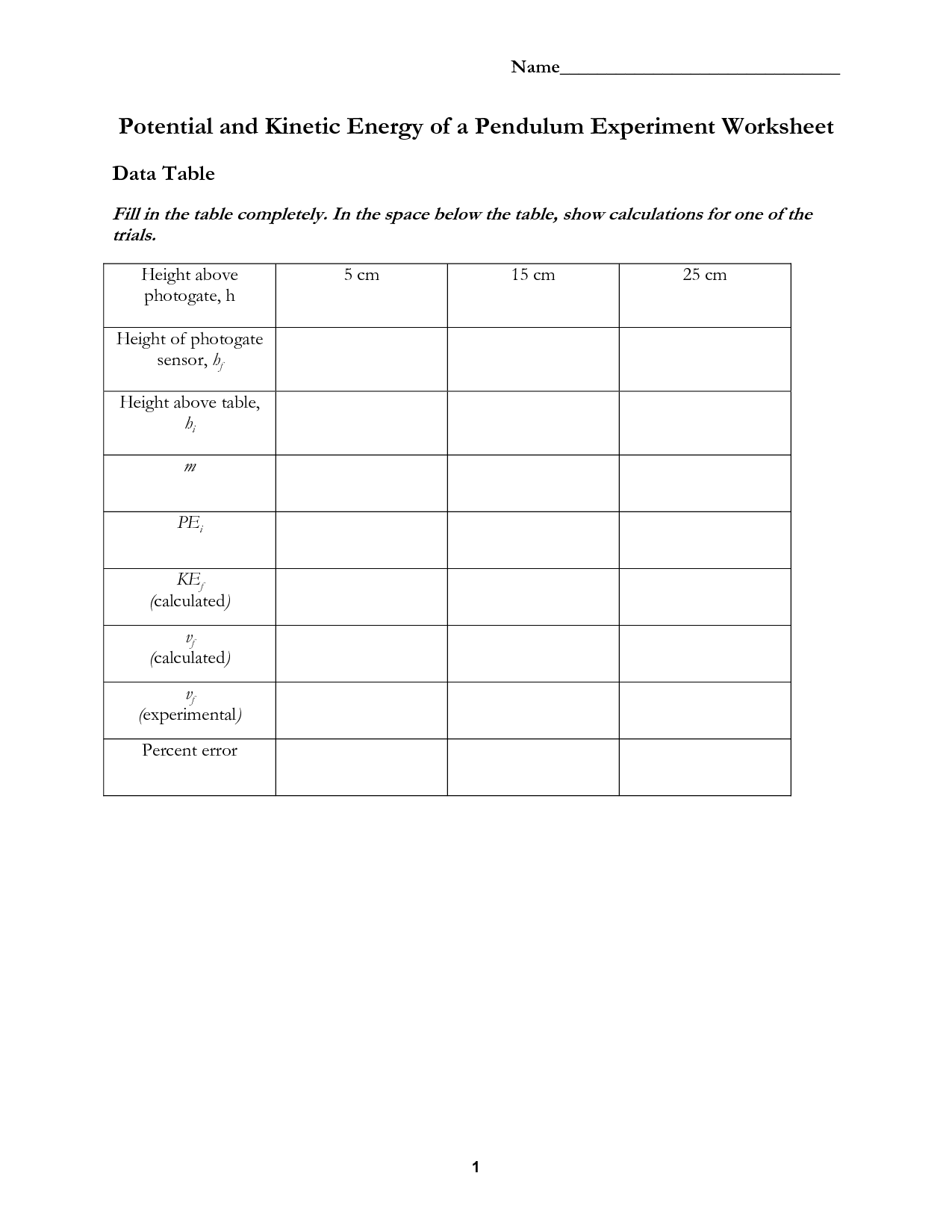

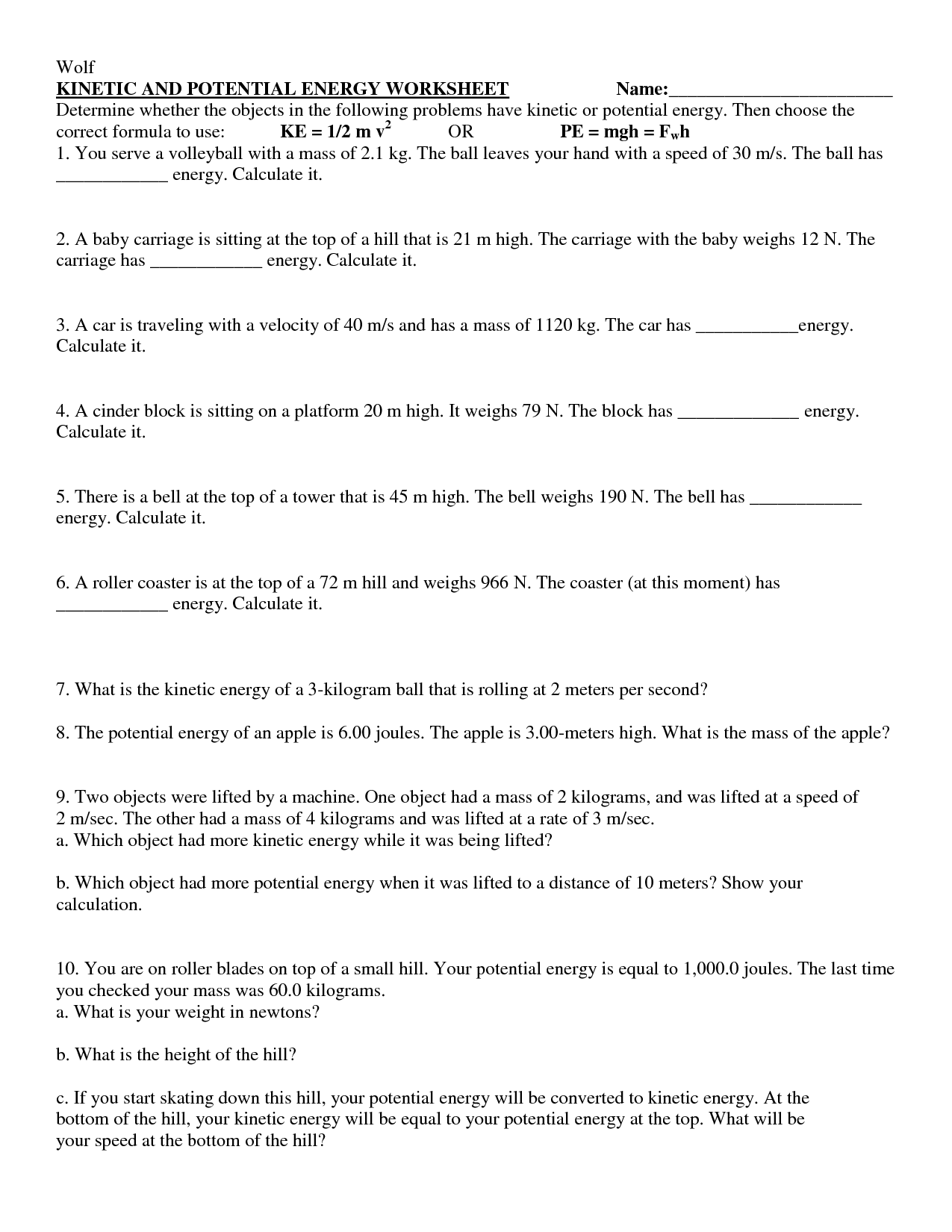
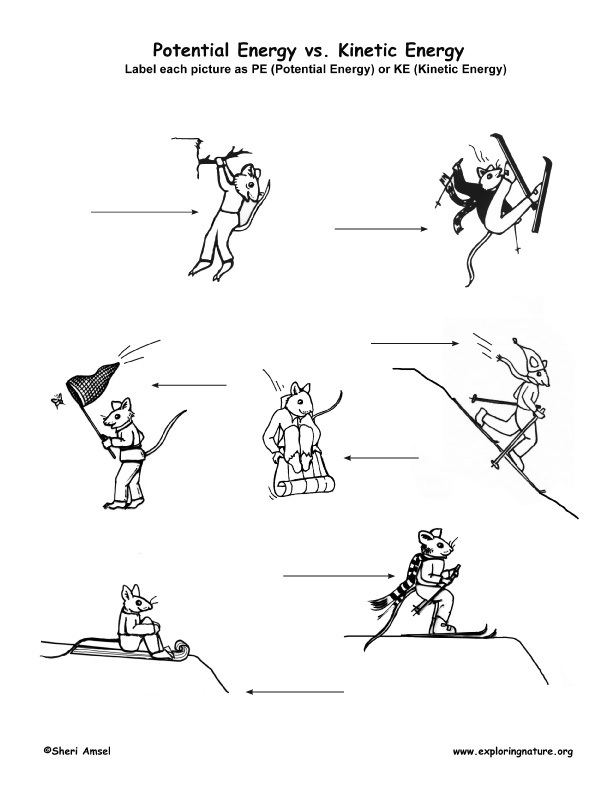
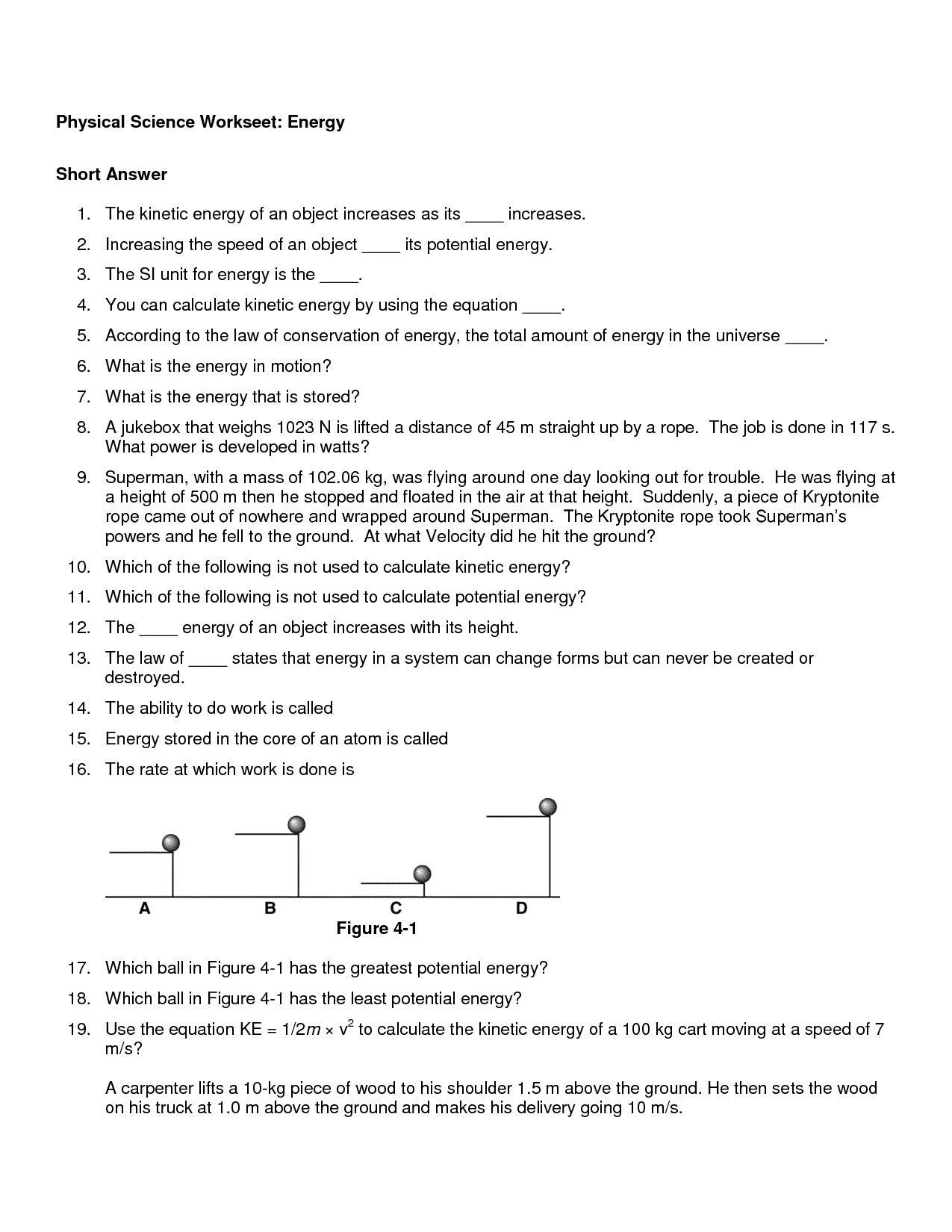













Comments